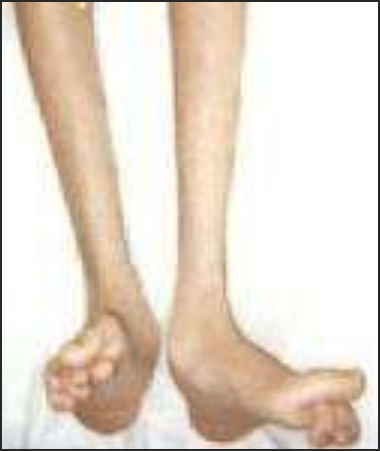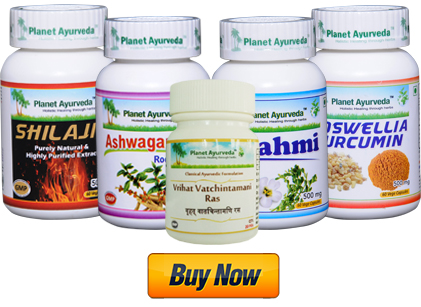Ayurvedic Treatment of Primary Hyperaldosteronism (Conn’s Syndrome)

Primary hyperaldosteronism/ Conn’s syndrome is kind of hormonal disorder, where adrenal glands release excess amount of hormone, called aldosterone, which are having property to balance sodium and potassium in the blood and this might lead to high blood pressure. It can be caused by either hyperactivity in one adrenal gland (unilateral disease) or both (bilateral disease).
The word “primary” denote the condition is caused by a problem within the adrenal glands.
CAUSES OF CONN’S SYNDROME
The reason for Primary hyperaldosteronism is problem within adrenal glands, which makes them to release too much aldosterone.
Conditions which commonly cause the overproduction of aldosterone comprises:
- A benign growth in an adrenal gland (aldosterone-producing adenoma)
- Hyperactivity of both adrenal glands.
AYURVEDIC VIEW
The reason for Primary hyperaldosteronism in ayurveda is imbalance of tridosha with main involvement of vata.
SIGNS AND SYMPTOMS OF CONN’S SYNDROME
The condition is most common in people 30 to 50 years old. The main symptom of hyperaldosteronism is High blood pressure only.
Hyperaldosteronism can enhance the possibility of heart attacks, heart failure, strokes, kidney failure, and early death.
Certain symptoms may appear because of action of high aldosterone levels in the on the kidney, which results in increased loss of the mineral potassium in the urine, which might leads to decrease in blood potassium level and results in tiredness, muscle weakness, and large volumes of urine (polyuria) is passed out, especially at night (nocturia).
Headache, numbness might also be there, or Temporary paralysis.
AYURVEDIC REMEDIES FOR CONN’S SYNDROME
1. Arjun Tea
Arjun Tea is a pure herbal product prepared by the combination of herb with medicinal properties. It is an effective remedy which supports healthy blood vessels and the circulatory system, as it provides nutrition to heart because of comprising a natural Co-enzyme Q 10 and it is rich in antioxidants. It is very potent medicine for heart problems like blocked coronary arteries, high cholesterol, high blood pressure, congestive heart failure and many others and thus helps to regulate the proper cholesterol levels, Controls Blood Pressure. This makes it an efficient Ayurvedic remedy for Conn’s Syndrome.
HERB USED –
- Arjuna (Terminalia arjuna): Arjuna is medicinal herb having anti-oxidant property, which is beneficial in decreasing LDL, Total and triglyceride cholesterol levels, thus helpful in hypertension.
- Punarnava (Boerrhavia diffusa): Punarnava is another herb with health-giving effects, acting as rejuvenate, and providing relaxation to heart muscles and regulates the level of Cholesterol.
- Pipal Tvak (Ficus religiosa): Pipal Tvak is an effective herb having features to improve strength of the heart muscle.
- Twak (Cinnamon zeylanicum): Twak is also beneficial, as it can maintain the proper balance of the cholesterol levels.
- Ela (Elettaria cardamom): Ela has properties that is very helpful in maintaining the good heart health.
DOSAGE – One cup twice daily is recommended.
2. Arjuna Capsules
Arjuna Capsules is herbal preparation of Planet Ayurveda which is manufactured using standardized extract of Arjuna. It is an effective s supplement for the heart and heart problems. It helps to keep the good cholesterol maintained.
Arjuna (Terminalia arjuna): Arjuna has been found to be effective natural herb for heart problems like blocked coronary arteries, high cholesterol, congestive heart failure and other heart problems.
DOSAGE – 1 Capsule, twice daily with plain water after meals.
3. Brahmi Capsules
Brahmi Capsules are purely herbal preparation of Planet Ayurveda, manufacture by use of standardized extract of Brahmi. It possesses the property that make it a suitable Ayurvedic remedy for hyperaldosteronism, as it much effective for hypertension.
HERB USED –
Brahmi (Bacopa monnieri): Brahmi is an herb with anti-oxidant properties and helps to maintain normal blood pressure in our body. It increases the consumption of nitric acid and normal vascular muscle functions.
DOSAGE – 1-2 capsules twice daily, with plain water after meals.
4. Kanchnaar Guggul
Kanchnaar Guggul is pure herbal formulation of Planet Ayurveda that is prepared using various herbs that work together to bring effective results, thus act as efficient Ayurvedic remedy for Conn’s Syndrome. All its herbs make it a good detoxifier, helps to eliminate the toxins.
INGREDIENTS WITH THEIR PART USED –
- Bauhinia variegata (Bark),
- Terminalia chebula (Fruit rind),
- Terminalia bellerica (Fruit rind),
- Emblica officinalis (Fruit),
- Zingiber officinale (Rhizome),
- Piper nigrum (Fruit),
- Piper longum (Fruit),
- Crataeva nurvala (bark),
- Elettaria cardamomum (Fruit),
- Cinnamomum Zeylanicum (Leaves Bark)
- Commiphora mukul (Guggulu Resin)
DOSAGE – 2-3 Tablets twice daily, after meals, with plain water.
5. Navkarshik Churna
The Navkarshik Churna is herbal formulation prepared in Planet Ayurveda by combination of various useful medicinal herb. All the herbs make this churna a useful Ayurvedic remedy for Conn’s Syndrome.
- Amla (Phyllanthus emblica)
- Haritaki (Terminalia chebula)
- Bahera (Terminalia bellerica)
- Vacha (Acorus calamus)
- Neem (Azadirachta indica)
- Manjistha (Rubia cordifolia)
- Katuki (Picrorhiza kurrroa)
- Giloy (Tinospora cordifolia)
- Daruhaldi (Berberis aristata).
All herbs in this mixture of churna possesses work together, acting as nutritional supplement and improves metabolism, thus provide enough energy to overcome the weakness, tiredness which results due to this disorder. It also help to reduce high cholesterol level and thus helps to maintain the proper blood pressure range.
DOSAGE – 1 tablespoonful two times a day, with plain water, half an hour after meals.




